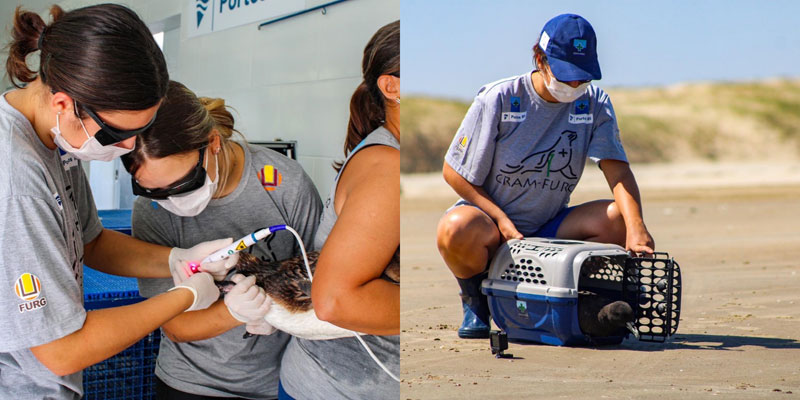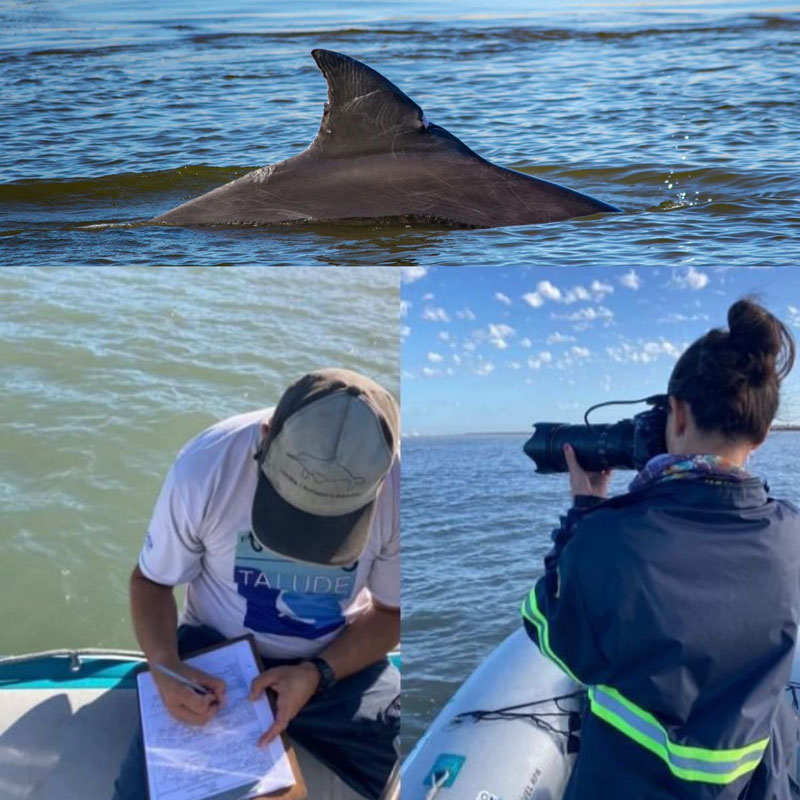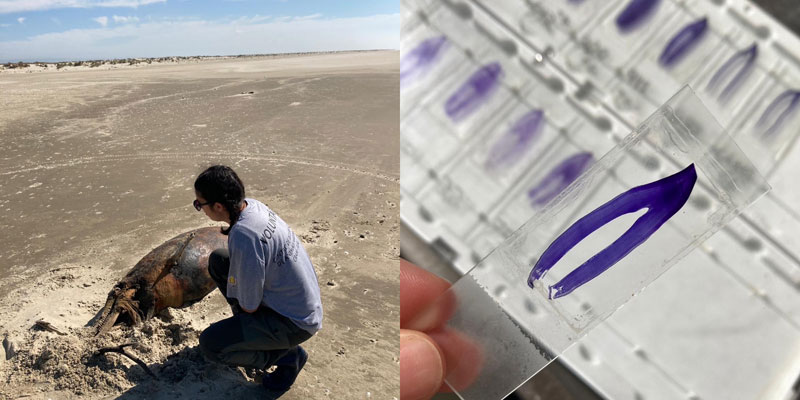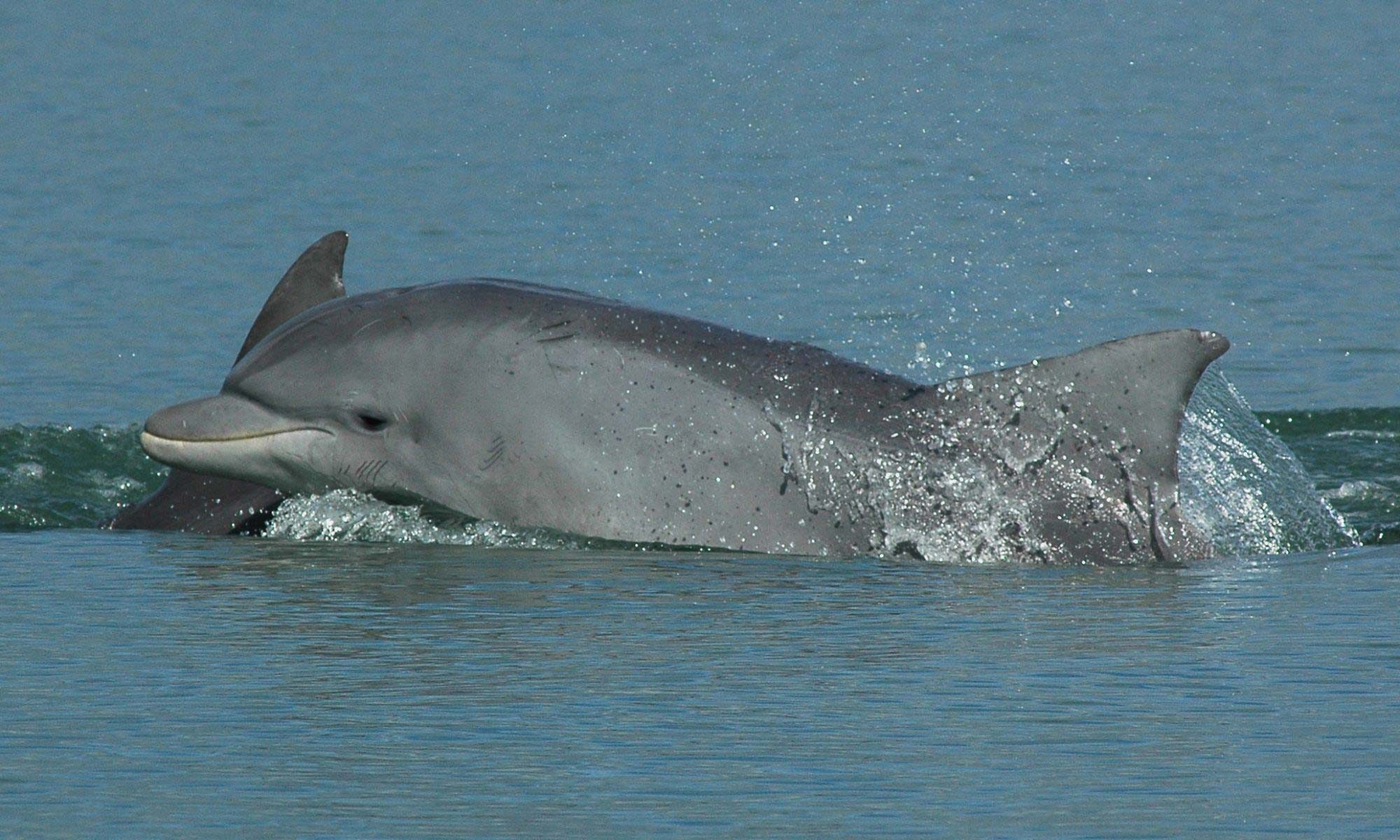On a journey of discovery to the supported projects in Brazil.
For almost five years, I have been working as an animal keeper with the dolphins at Planète Sauvage, a zoo that has supported YAQU PACHA for many years. My work consists of taking care of the animals' welfare on a daily basis, but also of participating in research and science and raising awareness among as many people as possible about the protection of these species in their habitat,
I communicate daily with visitors and explain to them the importance of in-situ and ex-situ conservation work. As the problems caused by human activities in the sea are increasing, it is becoming more and more important every day to find new solutions to protect species, help wildlife and conserve them.
But what about the projects we support on the ground every day?
I had been asking myself this question for some time. I wanted to see with my own eyes how the projects are implemented on the ground and where the money goes.
So I was given the opportunity to travel to Rio Grande in the south of Brazil for a month to see what the YAQU PACHA projects are all about. I took part in an internship to get to know YAQU PACHA's various conservation projects and the day-to-day work. The whole thing was in collaboration with the Federal University of Rio Grande FURG.
My stay began at CRAM FURG (Center for the Care of Marine Animals), where I was able to participate in the following activities.
Care of the animals in the center (turtles, penguins, birds, sea lions), monitoring on the beach, recording the different species of seabirds, pollution, strandings and anthropogenic waste, releases, necropsies, hematological / parasitological analysis or more about certain veterinary treatments such as ozone therapy or laser therapy.

In a second phase, I was placed in the ECOMEGA FURG laboratory for ecology and conservation of marine fauna. There I was able to get to know the various studies and conservation projects, such as the Toninhas project for the Fransiscana dolphin or the Boto project for the Lahille's bottlenose dolphin.
I was able to accompany the Boto project team on their regular trips to the sea to monitor the population with photo-identification and DNA samples.

Beach observations are also carried out twice a month, during which stranded animals are counted and various samples (teeth, organs, skin, skull) are taken from dead animals, which are then analyzed and examined in the laboratory.
For example, I learned that you can examine a whole range of biological parameters with a single dolphin tooth.

After several steps, we produce thin dental slices which we can use to determine the age of the animal. By extracting material (dentine), we can also examine the isotopes present, which give us information about the animal's diet, possible migrations or the characteristics of its habitat throughout its life.
It is therefore one of the daily tasks of ECOMEGAWe need to study these species, their life expectancy, their distribution, the use of their habitat, the size of their populations or even their habits and diet. If we know them better, we can underpin the importance of measures to combat the problems caused by human activities in the sea and improve the protection measures already in place (protected areas where fishing is prohibited, pingers in fishing nets).
I have returned from this volunteering experience with all the answers to my questions, with all the keys in hand to share and pass on the new knowledge I acquired on site with my colleagues and visitors to the park. It was a very enriching experience, both personally and professionally.
Thank you to everyone I met during this stay and thank you for your work. Thanks to the Team from YAQU PACHA for the trust they have placed in me.
Marie Labourier
"You protect what you love, and you love what you know." J. Cousteau

